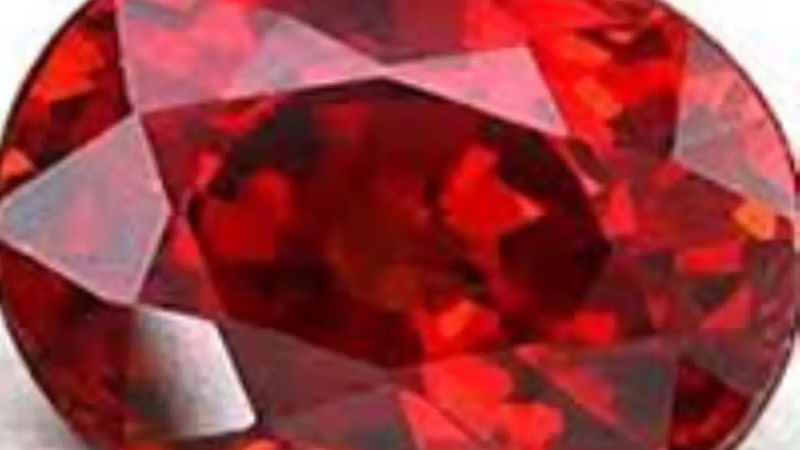
Discover stunning ruby gemstones from around the world.
The Rajaratna Ruby weighs approximately 2,475 carats (495 grams) and is considered one of the largest rubies in the world. It is currently housed in the Albert Museum in Jaipur, India. The exact origin and history of this gemstone are not well-documented. The Rosser Reeves Star Ruby, Weighing 138.7 carats (27.74 grams), this star ruby is renowned for its exceptional asterism, which creates a six-ray star effect on the surface when properly oriented. The gemstone is named after Rosser Reeves, an American advertising executive who owned it. It is currently on display at the Smithsonian Institution in Washington, D.C., United States.
The Delong Star Ruby Discovered in Burma (Myanmar), this star ruby weighs 100.32 carats (20.06 grams) and showcases a well-defined six-ray star. It was named after its former owner, Edith Haggin DeLong, and is also part of the Smithsonian's gem collection. The Sunrise Ruby weighs 25.59 carats (5.12 grams) and is known for its exceptional color and clarity. It is considered one of the finest and most expensive rubies in the world. The Sunrise Ruby was sold at an auction in 2015 for a record-breaking price per carat, making it one of the most valuable rubies ever sold.
The Chhatrapati Manik Weighing 20.6 carats (4.12 grams), this ruby is one of the largest rubies in India. It is part of the Crown Jewels of India and is associated with the Maratha Empire. The gemstone is currently housed in the National Museum of India in New Delhi. The Graff Ruby Weighing 23.88 carats (4.78 grams), the Graff Ruby is a rare and highly valuable gemstone. It is known for its exceptional color and clarity. The ruby was sold at an auction in 2006 for a record-breaking price, making it one of the most expensive rubies ever sold.
The largest ruby was found in Burma weighs about 400 carats. The most famous stone, the stone with the name of “peace “weighing 43 carats, which is the date discovered in 1919 AD, coinciding with the end of the first world war that is, it is named after. One of the big the world-famous rock Rubies is “Edvard Red ruby “weighing 167 carats, which is currently at the Museum of Natural London is located. Ruby Red Reeves (REVEES) weighing 138 carats in America kept. Ruby Red Long Star (LONG STAR) weighing 100 carats at the Museum of Natural New York as well as the most popular in the world.
The Liberty Bell Ruby is famous for its unique shape resembling the Liberty Bell in the United States. Weighing 8,500 carats (1.7 kg), it is considered one of the largest ruby carvings. The gemstone was sculpted from a single ruby crystal found in East Africa. It is currently on display at the Franklin Institute in Philadelphia, Pennsylvania. The Neelanjali Ruby Weighing approximately 1,370 carats (274 grams), the Neelanjali Ruby is one of the largest rubies in the world. Its name translates to "blue sapphire" in Hindi, although it is actually a ruby. The gemstone is known for its deep red color and is considered a prized possession by the Jaisalmer royal family in India.
The De Long Star Ruby Necklace is a large star ruby known as the De Long Star Ruby. The ruby is a 100.32-carat (20.06 grams) cabochon star ruby with a well-defined six-ray star. The necklace, created by famous jeweler Cartier, showcases the ruby surrounded by diamonds. It was once owned by American socialite and philanthropist Evalyn Walsh McLean. The Pride of Burma is a 95-carat (19 grams) cushion-cut gemstone known for its rich red color and exceptional clarity. It is considered one of the largest and finest rubies from Burma (Myanmar). The Pride of Burma was auctioned in 2016 and set a record for the highest price per carat ever achieved for a ruby at auction.
-
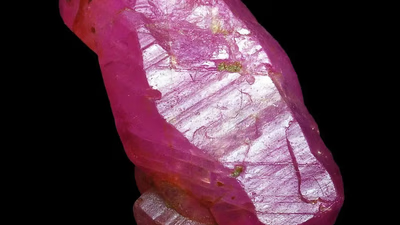
Identifying a genuine ruby gemstone involves several key characteristics. Authentic rubies display a vibrant, deep red color that is evenly distributed, without any noticeable variations. Flaws or inclusions are common in natural rubies, while flawless stones may be synthetic. The refractive index is another important factor; rubies have a high refractive index that can be measured with a refractometer. Additionally, rubies score 9 on the Mohs hardness scale, making them resistant to scratches from most materials. To differentiate real rubies from counterfeits, one can compare the stone"s color and shine with red glass or test its hardness by attempting to scratch it with other materials. Genuine rubies also exhibit excellent heat conductivity and may fluoresce under UV light. Certification from reputable gemological laboratories can further confirm authenticity and quality. "
-
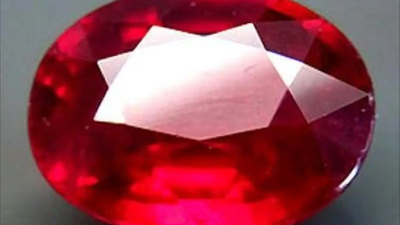
Ruby is a gemstone associated with vitality, passion, and energy. It is believed to enhance physical and emotional strength, promoting motivation and courage. Traditionally linked to love and romance, ruby is thought to deepen emotional connections and attract devotion. Additionally, it possesses protective qualities, shielding against negative energies and providing a sense of security. Ruby is also seen as a symbol of good fortune, believed to bring luck and prosperity in various life aspects, including business endeavors. Its healing properties are noted for improving blood health and boosting the immune system. The stone is said to increase energy levels, promote circulation, and support overall well-being. Historically revered in myths and cultures, ruby has been used as a talisman for power and protection.
However, its potent energy can lead to negative emotions if misused. Ruby"s benefits extend to women’s health issues such as infertility and menstrual pain relief. It is also recommended for treating fever by placing it on the third eye chakra or palm. Overall, ruby embodies strength, courage, joy, and self-confidence. "
-
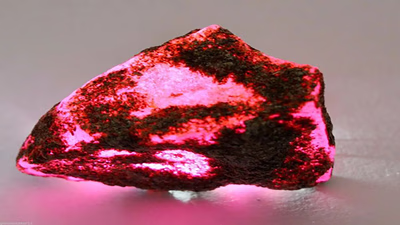
Rubies have been revered since ancient times, with origins tracing back to around 2000 BC in India, where they were known as "ratnaraj" or "king of gemstones. " Ancient texts associated rubies with power, protection, and good fortune. In Europe during the Middle Ages, rubies became symbols of wealth and status among royalty, often featured in crowns and religious artifacts. The Black Prince"s Ruby is a notable historical example, linked to English royalty. By the 13th century, Burma emerged as a key source of high-quality rubies, particularly the prized "pigeon"s blood" variety. Other regions like Thailand and Sri Lanka also gained recognition for their rubies over time. The 19th and 20th centuries saw advancements in mining and trading that made rubies more accessible to the general public. Today, rubies are celebrated for their vibrant color and historical significance, frequently used in fine jewelry and engagement rings. Their symbolism encompasses love, passion, courage, and vitality.
-
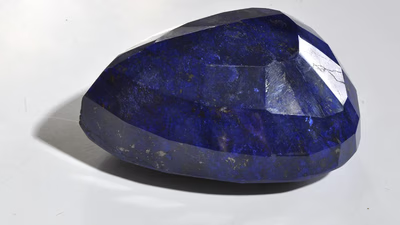
The value of Asian rubies is primarily influenced by color, clarity, size, and cut. The most sought-after rubies exhibit a vivid red hue with a hint of blue, known as "pigeon"s blood" red. Clarity is also crucial; rubies with fewer inclusions are more valuable. Size plays a significant role, as larger rubies are rarer and command higher prices per carat. The cut affects the gem"s brilliance and overall appearance, with well-cut stones being more desirable. Market demand can drive prices up based on origin and specific qualities. Notably, Burmese rubies are historically the most valued due to their exceptional characteristics. Other notable sources include Vietnam, Sri Lanka, and Thailand, each producing distinct color variations.
While heat treatment is common to enhance ruby quality, untreated stones with natural brilliance are considered more valuable. Understanding these factors is essential for buyers and sellers in the Asian ruby market.
-
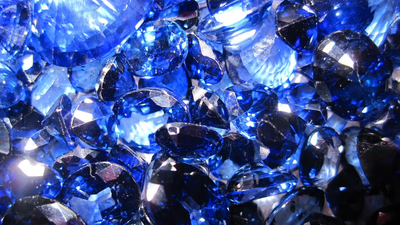
Ruby is renowned for its intense red color, ranging from deep red to purplish or orangish-red, with the most prized hue being "pigeon"s blood" red. Scoring a 9 on the Mohs scale, rubies are among the hardest gemstones, making them durable and suitable for jewelry. Their brilliance and luster are enhanced by proper cutting and polishing, with transparent rubies being the most valuable. Larger rubies are rare and command higher prices. Inclusions within rubies can affect clarity and value; however, some inclusions may be acceptable based on their characteristics. Rubies symbolize love, loyalty, and wealth, often associated with royalty throughout history. The gemstone"s color is attributed to chromium impurities in its structure. Notable sources of high-quality rubies include Burma (Myanmar), Thailand, Sri Lanka, Tanzania, Mozambique, and Madagascar. Rubies have cultural significance across various societies and are believed to bring good fortune.
-

The article highlights some of the largest and most famous ruby gemstones in the world, detailing their weights, origins, and unique characteristics. The Rajaratna Ruby, weighing approximately 2,475 carats, is noted as one of the largest rubies and is housed in Jaipur"s Albert Museum. The Rosser Reeves Star Ruby, known for its six-ray star effect, weighs 138. 7 carats and is displayed at the Smithsonian Institution. Other notable rubies include the Delong Star Ruby from Burma at 100. 32 carats, the Sunrise Ruby recognized for its color and clarity at 25. 59 carats, and the Chhatrapati Manik from India at 20. 6 carats.
The Graff Ruby is also mentioned for its high value after being sold at auction. Additionally, the Liberty Bell Ruby stands out due to its unique shape and weight of 8,500 carats. The Neelanjali Ruby is highlighted for its deep red color and royal significance in India. Lastly, the Pride of Burma garners attention for setting a record price per carat at auction. "






